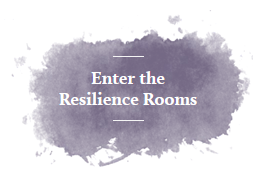The longest relationship you have is with yourself. 10 tips to enhance it.
We often make broad generalizations about who we are, how we function, and how we think, feel, and behave. Sentiments like I am a mean, selfish, ineffective, unlovable person, or some other derogatory adjective or attribute becomes second nature to us. This perpetuates the desire to get rid of the aspects of ourselves that we would prefer not having because our perception is that we would be better off not having “it” or being “that way.” We have the idea that we can successfully get rid of fundamental parts of who we are and control our thoughts and feelings about it.
Good luck getting rid of our emotional sensitivity, envy, worry, anger, negativity, and other parts. We all try masterful ways to deny, avoid, and discard those unfavorable parts of ourselves. By going through that process, rather than ridding ourselves of those parts, we further intensify the struggle with them. Our frustration and disdain exacerbate. Often to our chagrin, we recognize that no matter how hard we try, we are fundamentally who we are, and our thoughts and feelings are what they are. This keeps us in the cycle of self-loathing and self-hating.
How We Treat Others vs How We Treat Ourselves
When I ask individuals how they would approach their children or others who they cared about when they expressed being frustrated and hating parts of themselves, they inevitably say “with compassion and care.” When I ask them why they don’t approach themselves the same way, they invariably say they don’t know how to and for as long as they can remember, they have been frustrated, disappointed or angry at themselves for “being” that way. Also, that over time, they “lost” their desire and will to be patient, caring and compassionate toward themselves. Tough love has never been a strategy that worked, yet we still gravitate toward it and impose it on ourselves in the hope that we will finally be able to force out our unwanted parts.
It is the self-loathing part that needs the most empathy and kindness. If it were approached with compassion there would be more openness and opportunity for flexibility, leaning in, working on, developing, evolving, and growth. Research on self-compassion shows that it assists with better health, relationships, motivation, self-confidence, self-fulfillment, resilience, and emotional balance.
Ways to Foster Self-Love & Self-Compassion:
(1) Be conscious not to label yourself with broad generalizations of who you are and what you are about. For example, stick to the thoughts and feelings in the particular circumstance, rather than globally identifying yourself that particular way. For example, “my mind is being negative right now” as opposed to “I’m so negative.”
(2) Notice that we ALL have many parts to ourselves, some parts are more favorable, and there are other parts that we would like to work on and further develop. Being human and embracing our humanness, realize that we are all imperfect and there is and will always be parts of us that we need to work on. You are a work in progress. While you are living, there is never an end point to your development and growth.
(3) Be realistic about the feasibility of change and focus the evolution around “you” and avoid comparing yourself to others’ accomplishments or where they are at. The level of progress is individualized, and everyone works at their own pace. The goal isn’t to be a different you, but rather be more like you, and your very best self.
(4) Understand that although the part you are challenged with can be disappointing and frustrating at times, it is also the part that guides you and provides you with important information as to what your core values are and who you truly want to be.
(5) Notice when you are being hard on yourself and are distaining that part. Equally notice the intrinsic value(s) that’s formative for you in that moment. For example, if you get down on yourself for being overly protective of your child because you worry in the moment, notice the worry, your thoughts and feelings about getting worried, and identify the value that is operating (parenting values, safety values, etc.) and thank your mind for reminding you what’s truly important to you so you can take the necessary steps to meet your needs and values.
(6) Recognize that although you have an emotionally sensitive, angry, self-centered, worried, and other moments that you do not necessarily need to act on that thought or feeling. You get to decide how you want to behave based on identifying and recognizing all the values that may be operating in that moment (in the example above — independence, individuation, etc.). You can make a decision or choice that is well thought out, processed and mindful, and is in line with being your best you.
(7) That part of you is likely to be something you have been challenged with since your childhood. You may have gotten messages from other people or society at large that you shouldn’t have it, or you should rid yourself of it. This process may be a shift in the way you are dealing with it and with yourself in general. It takes time and practice to see and treat yourself differently.
(8) Practice providing compassion and kindness toward the challenging part. When it shows up, notice it with curiosity and openness and avoid judging and berating yourself. With imagery you can imagine hugging that part, saying something compassionate to it and/or inviting it in to gently and kindly just be with you without wishing it were absent or trying to push it away. Even when negative or uncomfortable thoughts and feelings about it are looming, acknowledge it, and purposefully and proactively show it loving kindness.
(9) When you are distressed or challenged, mindfully ask yourself, “What am I experiencing right now?” and “How am I thinking and feeling about it?” You can additionally compassionately ask, “What do I need right now?” and “How will I be kind to myself when I suffer?” There is often no choice but to accept that things are and will continue to be painful. If we can be kind to ourselves in the midst of suffering, rather than avoiding, distracting, warding off, or beating ourselves up because of the suffering, then we can be with our anguish and sorrow with greater ease.
(10) To help you connect with your self-compassion, consider writing one of these three letters (adapted from Kristin Neff and Christopher Germer):
1. Think of an imaginary friend who is unconditionally wise, loving, and compassionate and write a letter to yourself from the perspective of your friend.
2. Write a letter as if you were talking to a dear friend who was struggling with the same concerns as you.
3. Write a letter from the compassionate part of yourself to the part of yourself that is struggling.
After writing the letter, you can put it down for a while and then read it later, letting the words soothe and comfort you when you need it most.
Take the time to be compassionate toward yourself. The longest relationship that you will have with anyone is the one you have with yourself. You are worth all your time, efforts, and love — because you truly matter.
Here is a Strength and Resilience Guided Meditation Part 2 led by me. Please consider subscribing to my channel for more talks and guided meditations.
Blog as posted on Psychology Today.



